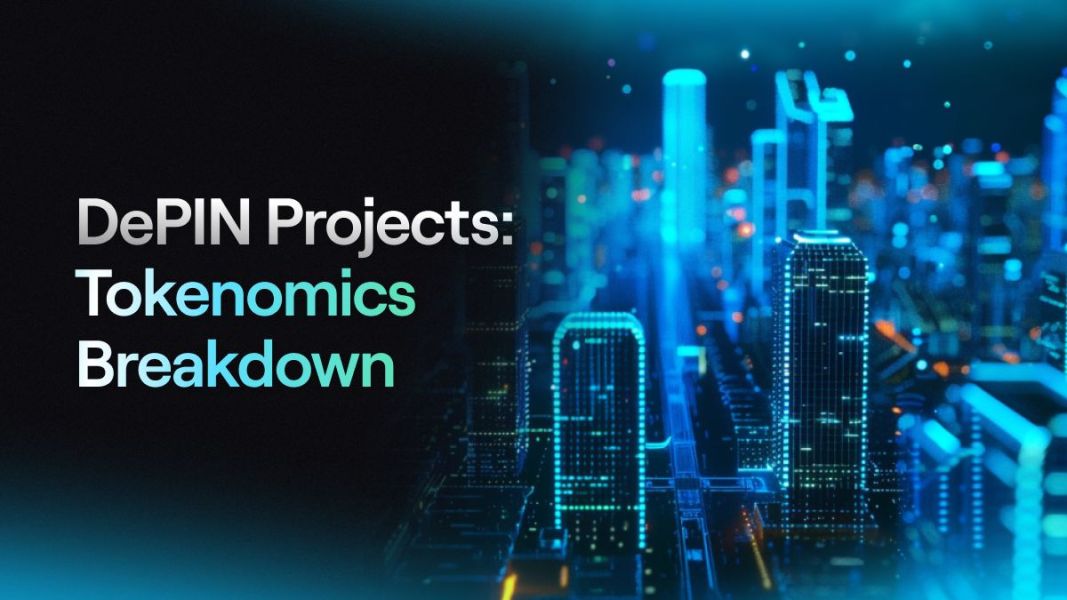Tokenomics, or the economics of tokens, is a crucial aspect of any blockchain-based project. It defines how tokens are distributed, used, and managed within the ecosystem. For Decentralized Physical Infrastructure Networks (DePIN), tokenomics plays a vital role in incentivizing participation, driving innovation, and ensuring the long-term sustainability of the network. In this article, we’ll explore the intricacies of tokenomics in DePIN projects, using NATIX as a prime example to illustrate these concepts.

The Foundation of DePIN Tokenomics
At the core of DePIN projects is the use of blockchain technology to create decentralized networks for infrastructure development and management. Unlike traditional centralized systems, DePIN projects leverage the collective power of participants to coordinate and optimize infrastructure operations. This decentralized approach is powered by tokens, which we call DePIn Crypto that serve as the lifeblood of the ecosystem.
Token Distribution and Allocation
One of the fundamental aspects of tokenomics is the distribution and allocation of tokens. For DePIN projects, it’s essential to design a fair and equitable distribution model that rewards early adopters, active participants, and contributors to the network. Typically, token distribution involves several key stages:
- Private Sale: In the initial stage, a portion of the tokens is allocated to early investors and strategic partners. This private sale phase helps secure initial funding and build a strong foundation for the project.
- Public Sale: Following the private sale, the public sale phase opens to a broader audience. This phase is often accompanied by extensive marketing efforts to raise awareness and drive participation. The public sale democratizes access to tokens, allowing a diverse group of participants to join the network.
- Airdrops and Rewards: To further incentivize participation, DePIN projects may conduct airdrops, distributing free tokens to users who meet specific criteria. Additionally, participants can earn tokens through various activities within the network, such as data sharing, event detection, and community engagement.
- Ecosystem Development: A significant portion of the tokens is reserved for ecosystem development, partnerships, and community initiatives. These tokens are used to fund ongoing development efforts, foster collaboration, and drive innovation within the network.
Token Utility and Use Cases
The utility of tokens within the DePIN Crypto ecosystem is another critical component of tokenomics. Tokens must have real-world use cases that drive demand and ensure their continued relevance and value. In the context of DePIN projects, tokens typically serve multiple purposes:
- Incentivizing Participation: Tokens are used to reward participants for their contributions to the network. Whether it’s sharing data, providing services, or participating in governance activities, users can earn tokens as compensation for their efforts. This incentive structure encourages active engagement and fosters a sense of community ownership.
- Facilitating Transactions: Tokens facilitate transactions within the network, enabling users to access premium features, pay for services, and transact with other participants. This creates a seamless and efficient ecosystem where economic activities are streamlined and decentralized.
- Supporting Governance: Tokens enable decentralized governance, allowing participants to propose and vote on initiatives, allocate resources, and make collective decisions. This democratic approach ensures that the network remains transparent, accountable, and aligned with the interests of its community members.
Real-World Example: NATIX Tokenomics
NATIX, a pioneering DePIN project, exemplifies the principles of tokenomics in action. The NATIX Crypto token serves as the backbone of the NATIX ecosystem, driving participation, facilitating transactions, and supporting governance.
- Incentives and Rewards: NATIX rewards users with NATIX Crypto tokens for contributing data, participating in events, and engaging with the community. This incentivizes active participation and fosters a sense of ownership among users.
- Transactions and Utility: NATIX Crypto tokens can be used to unlock premium features within the NATIX app, pay for services, and transact with other participants. This creates a dynamic and user-centric ecosystem where participants can access valuable resources.
- Decentralized Governance: NATIX empowers token holders to participate in governance activities, proposing and voting on initiatives that shape the future of the network. This decentralized governance model ensures that decisions are made collectively and transparently.
Tokenomics is a critical component of DePIN projects, providing the economic framework that drives participation, innovation, and sustainability. By designing a fair and equitable distribution model, ensuring robust utility and use cases, and fostering decentralized governance, DePIN projects can create dynamic and inclusive ecosystems. NATIX serves as a prime example of how effective tokenomics can drive the success of a DePIN project, leveraging the power of tokens to incentivize participation and foster community engagement. For more insights into the economic model behind DePIN Crypto, visit NATIX’s blog.

Founder Dinis Guarda
IntelligentHQ Your New Business Network.
IntelligentHQ is a Business network and an expert source for finance, capital markets and intelligence for thousands of global business professionals, startups, and companies.
We exist at the point of intersection between technology, social media, finance and innovation.
IntelligentHQ leverages innovation and scale of social digital technology, analytics, news, and distribution to create an unparalleled, full digital medium and social business networks spectrum.
IntelligentHQ is working hard, to become a trusted, and indispensable source of business news and analytics, within financial services and its associated supply chains and ecosystems










